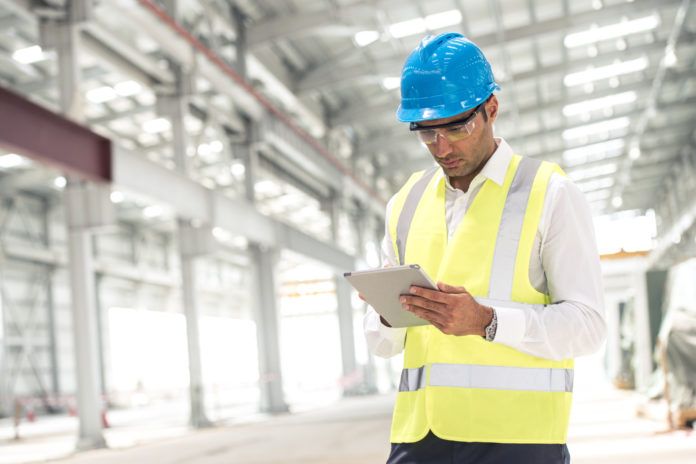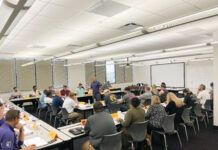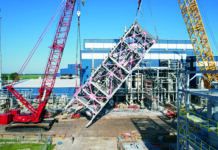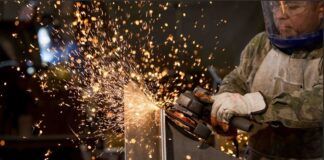Get a primer on self-checking safety.
 Stop
Stop
While this is one of the easiest steps in the self-checking process, it is one of the most frustrating for people used to “getting things done.” While a positive self-starter attitude is a great thing to have, don’t let it get in the way of taking your time to do the job right the first time.
Take the time to stop what you are doing and think about what you are about to do. Research has shown time and time again that taking the time to stop and focus on the parts that go into your job or task saves time in the long run and helps increase your chances of being successful.
Think
What actions are you about to take? Do you have all of the tool and equipment you need to successfully complete the job? What are the potential outcomes of the steps you are about to take?
Thinking about the job in pieces—meaning thinking through each step in the process—will help you identify if anything is out of the ordinary or needs to be further risk assessed.
Thinking about the job as a whole will help you identify any hazards associated with the overall task: Are there any conflicting activities that make your job more hazardous (hot work, dropped objects, etc.)?
Don’t just talk through the steps you are about to take, but actually spend some time trying to understand the consequences of your actions. Maybe there is nothing out of the ordinary, and you can go about your work as usual. But if you do identify new hazards to the job, this upfront assessment could be the difference between a successful job or an on-the-job accident.
Act
Now is the time to take the action that you stopped to think about. That isn’t to say you should go through the job on autopilot and not give it another thought. What we want you to do is act deliberately and carry out the work that you planned in earlier stages of this safety self-checking process.
Every time you do a job, there is an opportunity to improve that job for the next time. When you are working through the job, keep notes of the lessons learned from this activity. Staying aware of the hurdles you encounter on every job will help you in the review stage of the STAR process.
Review
The specific job or task or step has been completed. You went through the Stop, Think and Act stages of the self-checking process, and now it’s time to assess the work.
Did you get the results you were expecting? Is anything out of the ordinary, requiring further action? Is it safe to continue on with the work or secure the job as planned?
If you are reviewing the job as a whole, what lessons learned can you capture for the next time someone completes the work?
Regardless of the size of the job, there are always lessons we can take away from the activity. Taking the time to review your work is a valuable step in maintaining a culture of continuous improvement. If you skip the review stage of the self-checking STAR process, you could be setting yourself or someone you work with up for failure in the future.
When to use self-checking
Every task you complete can benefit from some level of self-checking. The example used earlier of leaving your house is a task we complete multiple times a day, every day, but still, there are times when we forget something. If you took the time to Stop and Think before you Act, would you forget as much when you left the house?
The same principles can and should be applied on the job. If you perform a quick self-check each time you do a job or perform a task, you can cut down on the number of errors on any given day. Depending on the size of the job or the frequency of the tasks, you could potentially cut down on thousands of dollars in scrap, rework and injuries to your personnel.
Working alone
When you or your employees are working alone, it’s easy to get tunnel vision and focus on completing the job. But taking the time to perform a self-check gives you the opportunity to slow down just enough to ensure you’re doing the right step at the right time and determine whether any new variables have entered the equation.
But how do you identify when to perform a self-check when working alone?
There are a lot of indicators that the situation requires self-checking.
Pre-job: Prior to starting work is the most obvious time to perform a self-check.
Plan change: Any time the plan changes, you should perform a safety self-check.
Operating equipment: When you start up a piece of equipment, shut down a piece of equipment or you perform a critical function of a piece of equipment is a good time to self-check.
Job interruption: If someone or something interrupts your work, you should perform a self-check before returning to the job.
Time pressure: Time pressure can speed up your work tempo. If you feel as though you are going faster than normal, you should walk through the STAR self-check process to keep your mind on the job and potential hazards.
While not a complete list, the above identifiers are great milestones to help you determine when to perform a self-check. Not included in the above list is a time elapse self-check. While harder to define, this occurs when you start to feel like you have been working for an extended period of time without performing a self-check. There is no harm in stopping to get your bearings and ensure you’re still on the right track.
Working in groups
Your action has consequences that can affect those working around you. Using the STAR process is an essential part of working with other employees as part of a team.
It is not uncommon for group-think to cause a group of even the most experienced professionals to overlook hazards during an operation. This can happen because if one person doesn’t spot or declare a hazard, the rest of the group may not recognize the presence of the hazardous situation.
Ensuring you’re planning the work and working the plan, the self-checking process will help you make sure your part of the job is carried out in a safe and efficient manner. The STAR process will also help you identify any hazards associated with your tasks that could negatively impact the work as a whole or any part of the team individually.
Self-checking is a simple, yet vitally important part of any human performance improvement initiative. Whether done as part of a bigger continuous improvement roll-out or as an add-on to your existing process improvement plan, self-checking is a powerful safety tool.
Toolbox Talks offers quick insights and thoughts to use for your toolbox (tailboard) talks. Dave Sowers is a founding member of Knowledge Vine, a veteran-owned human performance training and consulting organization that strives to reduce the frequency and severity of human errors in the workplace. He has almost 30 years of experience in power generation and the utility industry. He is a veteran of U.S. Navy Nuclear Power Program and holds a bachelor’s degree in resources management and a master’s degree in both management and emergency management and homeland security.


 Stop
Stop




![How to protect machinery during transport [Sponsored by Gulf Coast Wrap]](https://www.1012industryreport.com/wp-content/uploads/2025/01/Screenshot-2025-01-15-114047-218x150.png)

